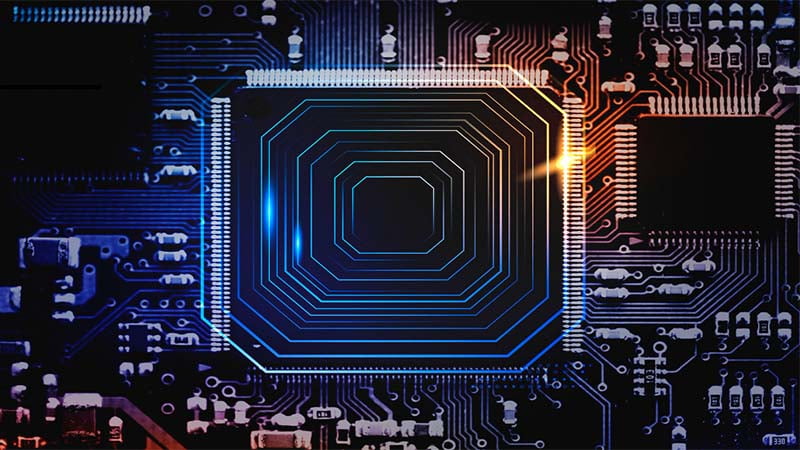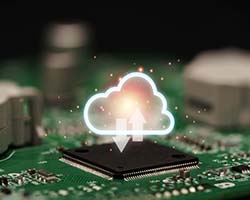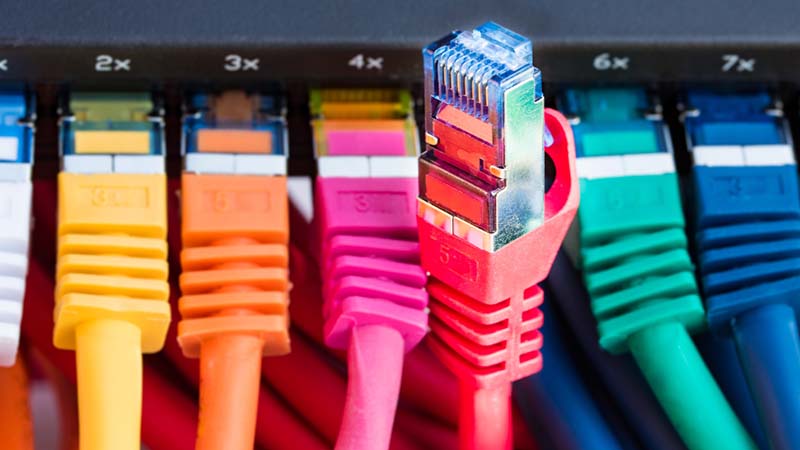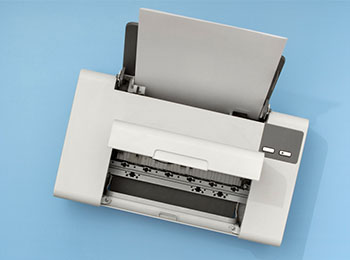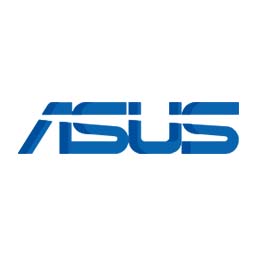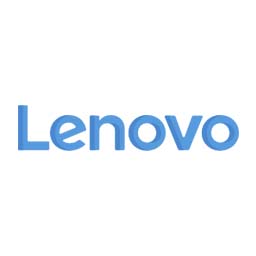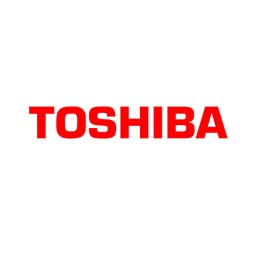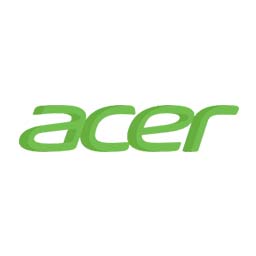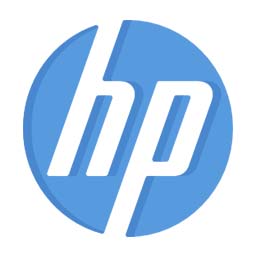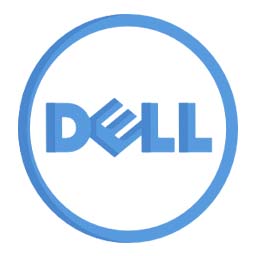Introduction to Data Center UPS
A data center is a crucial component of any organization’s IT infrastructure, storing and managing vast amounts of sensitive data. To ensure uninterrupted operation and protect against any potential power disruptions, data centers rely on APC Smart-UPS uninterruptible power supply (UPS) systems. These UPS systems act as a backup power source when the main power supply fails or fluctuates.

The Introduction to Data Center UPS section provides a fundamental understanding of what a UPS is and why it is essential for data centers.
Data Center UPS systems are designed to provide backup power and protect sensitive equipment, such as servers, storage devices, and network switches. By preventing power outages or fluctuations, a UPS ensures critical operations can continue uninterrupted even during a power failure.
The primary purpose of a UPS is to bridge the gap between a power outage and the activation of a standby power source, such as a generator. As a result, data center UPS systems play a crucial role in maintaining the availability and reliability of the services hosted within the data center.
Some of the key functions and benefits of a data center UPS include:
- Uninterrupted Power Supply: In case of an unexpected power interruption, a UPS provides an immediate and seamless transition to backup power, ensuring continuity of operations and safeguarding against data loss or equipment damage.
- Voltage Regulation: UPS systems act as voltage regulators, stabilizing the power supply and protecting the connected equipment from voltage surges, sags, or spikes that may occur due to grid fluctuations.
- Power Conditioning: UPS systems eliminate harmful electrical disturbances, such as harmonics, power noise, and frequency variations, thereby providing cleaner and more stable power to the connected devices.
- Noise Filtration: Data center UPS systems are equipped with filters that remove electrical noise from the power supply, reducing the risk of interference and improving the performance and lifespan of connected equipment.
- Reduced Downtime: By ensuring continuous power availability and protecting against power-related issues, UPS systems minimize downtime and can significantly reduce the impact of outages on critical operations.
- Battery Backup: Most UPS systems have batteries that can provide backup power for a certain duration, allowing data center operators to gracefully shut down systems or activate other backup power sources during extended power outages.
In summary, data center UPS systems ensure uninterrupted power supply, protect equipment from voltage fluctuations and disturbances, reduce downtime, and safeguard against data loss or equipment damage. Understanding the features and capabilities of a UPS is essential for making an informed decision when selecting the right UPS system for a data center.
Scalability and Redundancy
When evaluating a data center UPS system, scalability and redundancy are 1 of the top features to consider. A scalable and redundant UPS system ensures that the data center can grow and adapt to changing demands while minimizing downtime and maximizing uptime.
Scalability refers to the ability of the UPS system to accommodate increased power requirements as the data center expands. As your business grows and your IT infrastructure expands, you may need to add more servers, storage devices, and networking equipment. This increased equipment will inevitably lead to higher power demands.
A scalable UPS system allows you to easily add additional capacity or modules to meet these growing power requirements. It provides flexibility and allows for seamless expansion without extensive reconfiguration or downtime. The ability to scale up also ensures that the UPS system can handle future technology advancements and higher power densities.
Redundancy, on the other hand, refers to duplicating critical components or systems within the UPS system. It is essential for ensuring uptime and mitigating the risk of failure. A redundant architecture ensures that if one component or system fails, another takes over without disrupting the critical loads.
A UPS system with N+1 redundancy is a popular choice for data centers. In this configuration, there is one additional module or component beyond the required capacity. This extra module provides redundancy and ensures that even if one module fails, the other modules can still handle the load. N+1 redundancy offers a high level of fault tolerance, ensuring continuous operation and protecting valuable data and equipment.
In addition to N+1 redundancy, some UPS systems offer modular redundancy, also known as hot-swappable modules. With this setup, individual modules within the UPS can be replaced while the system is still online, eliminating the need for downtime during maintenance or component replacement.
When evaluating the scalability and redundancy of a data center UPS system, it is important to consider factors such as the maximum capacity, module size, and the ease of adding or removing modules. The UPS system should have a flexible architecture allowing seamless expansion and meeting current and future power requirements.
Overall, investing in a UPS system that offers scalability and redundancy ensures that your data center can handle growth and withstand unforeseen events, minimizing downtime and protecting critical operations.
Energy Efficiency
Regarding data center operations, energy efficiency is a crucial factor to consider. The power requirements of a data center can be substantial, making it imperative to choose a UPS system that prioritizes energy efficiency. Here are some key features to look for in a data center UPS that will help optimize energy usage:
- Efficiency Ratings: The efficiency of a UPS system is typically measured using the term “power factor.” Look for a UPS with a high power factor rating, as this indicates that the system can convert a larger percentage of input power into usable output power. Higher power factor ratings translate to less wasted energy, resulting in cost savings and reduced environmental impact.
- Eco Mode Operation: UPS systems with an “eco mode” feature offer enhanced energy efficiency. In this mode, the UPS operates with reduced power conversion stages, bypassing the double conversion process unless necessary. The eco mode feature minimizes energy loss and increases overall system efficiency by bypassing unnecessary conversions.
- Scalability: Energy efficiency can also be improved through scalability. Opt for a UPS system that allows for modular growth, enabling you to add or remove power modules as needed. This modularity ensures that the UPS is operating at optimal capacity, minimizing energy waste associated with underutilization or overprovisioning.
- Energy Monitoring: Look for a UPS that provides comprehensive energy monitoring capabilities. This feature allows you to track the power consumption and efficiency of your data center in real-time. With accurate energy data at your disposal, you can identify areas of improvement, optimize power utilization, and reduce energy wastage.
- Intelligent Energy Management: UPS systems equipped with intelligent energy management features can actively monitor and control power consumption. These systems automate energy-saving measures such as load shedding, in which non-essential equipment is powered down during periods of low demand. By intelligently managing energy usage, these UPSs optimize efficiency without compromising on critical power supply.
- Power Saving Modes: Some advanced UPS models offer power-saving modes that enable you to customize energy-saving strategies according to your specific requirements. These modes allow you to fine-tune operational parameters, such as adjusting output voltage or regulating the use of power-consuming components. You can maximize efficiency by tailoring power-saving modes to your data center’s needs while still meeting operational demands.
Data center operators can reduce their environmental footprint and lower operating costs by selecting a UPS system with these energy-efficient features. Prioritizing energy efficiency benefits the environment and contributes to the data center’s long-term sustainability and profitability.
Battery Management
Battery management is a crucial feature to consider when evaluating a data center UPS. The efficiency and reliability of a UPS system heavily rely on its ability to manage and maintain the batteries that provide backup power during outages. Here are some key factors to look for in battery management:
- Battery Monitoring: An effective UPS system should have robust battery monitoring capabilities. This includes real-time monitoring of battery health, voltage levels, temperature, and overall performance. Comprehensive battery monitoring allows for early detection of potential issues or battery deterioration, ensuring that batteries are in optimal condition for when they are needed.
- Battery Testing: Regular battery testing is essential to assess their capacity and determine if they can sustain the load during a power outage. Look for a UPS system that offers automated battery testing functionality. This feature allows for periodic and systematic testing of batteries without disrupting the data center’s operations. Automated testing provides peace of mind, as it ensures that the batteries are ready when they are needed most.
- Battery Replacement Alerts: Timely battery replacement is vital to ensure an uninterrupted power supply. A UPS system that can trigger alerts when batteries need to be replaced simplifies maintenance and helps prevent unexpected failures. Advanced systems may even provide predictive analysis, anticipating when battery life will reach the end, allowing for proactive replacement planning.
- Temperature Monitoring and Control: Batteries are sensitive to temperature fluctuations. High temperatures can accelerate battery aging and reduce their lifespan. Look for a UPS system with temperature monitoring and control capabilities. This feature ensures that batteries are kept within optimal temperature ranges, extending their life and performance.
- Battery Charging Efficiency: Efficient battery charging is essential to maximize the life and performance of the batteries. Look for a UPS system that offers smart charging algorithms, ensuring that batteries are charged optimally based on their type and condition. This feature minimizes overcharging or undercharging, which can significantly impact battery health and longevity.
- Battery Maintenance and Replacement: Consider the ease of battery maintenance and replacement in the UPS system you choose for your data center. Look for models that offer hot-swappable batteries, allowing for easy replacement without interrupting the power supply to critical equipment. Additionally, consider the availability and cost of replacement batteries to ensure ongoing operational efficiency.
Proper battery management is crucial for the reliable operation of a data center UPS. By selecting a UPS system with advanced battery management features, data center operators can enhance their UPS’s efficiency, prolong battery life, and minimize downtime risks.
Remote Monitoring and Management
Remote monitoring and management capabilities are essential features to look for in a data center UPS. These features allow for efficient monitoring, control, and maintenance of the UPS system, ensuring optimal performance and reliability.
- Real-time monitoring: Remote monitoring enables continuous monitoring of the UPS system, providing real-time updates on critical parameters such as power output, battery health, and load levels. This helps data center operators proactively identify any issues or potential failures and take immediate action to prevent downtime.
- Alert notifications: An effective remote monitoring and management system should provide alert notifications via email, SMS, or other preferred methods to quickly notify the relevant personnel about any deviations or critical events. This ensures prompt response and minimizes the risk of prolonged outages.
- Remote control: The ability to remotely manage and control the UPS system allows users to perform necessary actions such as adjusting voltage settings, initiating self-tests, or shutting down specific circuits as needed. This feature reduces the need for on-site intervention, saving time and resources.
- Historical data and analytics: A robust remote monitoring solution should include a comprehensive historical data log and analytics capabilities. This enables operators to analyze trends, identify patterns, and troubleshoot potential issues more effectively. It provides valuable insights into power consumption, system performance, and battery health for better decision-making and resource optimization.
- Firmware updates: Remote monitoring and management systems should support firmware updates for the UPS system to ensure it remains up to date with the latest enhancements and bug fixes. Regular firmware updates can improve performance, address security vulnerabilities, and add new functionalities to the UPS system.
- Integration with management platforms: Look for a UPS solution that offers seamless integration with popular data center management platforms like SNMP or BMS. This allows for centralized monitoring and management of multiple devices, streamlining operations and reducing complexity.
- Secure access: Security is paramount when it comes to remote monitoring and management. A data center UPS should provide secure access controls and encryption protocols to safeguard data and prevent unauthorized access to the system.
By prioritizing remote monitoring and management capabilities in your search for a data center UPS, you can ensure proactive monitoring, efficient control, and timely response to critical events. These features enhance the reliability and availability of your data center, minimizing the risk of downtime and maximizing performance.
Integration with Renewable Energy Sources

As the world continues to shift towards sustainable and environmentally friendly practices, integrating data centers with renewable energy sources has become a priority for many businesses. This integration helps reduce greenhouse gas emissions, lower energy costs, and align with corporate social responsibility goals. When selecting a data center UPS, it is crucial to consider its ability to integrate with renewable energy sources effectively.
Here are some key features to look for in a UPS system when considering integration with renewable energy sources:
- Compatible with multiple renewable energy systems: A data center UPS should be compatible with various renewable energy sources such as solar panels, wind turbines, or fuel cells. This compatibility ensures that the UPS can effectively receive and utilize the energy generated by these sources.
- Bi-directional energy flow: The UPS should support bi-directional energy flow, allowing the data center to not only consume energy from renewable sources but also feed excess energy back to the grid or other parts of the facility. This capability maximizes the utilization of renewable energy and reduces waste.
- Intelligent energy management: An intelligent energy management system is crucial for efficiently managing energy consumption and integrating renewable energy sources. Look for a UPS that can monitor energy usage in real-time, optimize energy distribution, and switch between different power sources seamlessly.
- Energy storage capabilities: As renewable energy sources can be intermittent, a UPS with built-in energy storage capabilities is ideal for data centers. This allows the system to store excess energy generated during periods of high renewable energy production and utilize it during times of low production or high demand.
- Efficient conversion and conditioning: The UPS should have high-efficiency conversion capabilities to ensure minimal energy loss during the conversion process. It should also provide clean and stable power output, protecting sensitive equipment from voltage fluctuations or power disturbances.
- Monitoring and reporting: Integration with renewable energy sources requires comprehensive monitoring and reporting capabilities. The UPS should provide detailed energy usage data, renewable energy contribution, and other relevant performance metrics. This information is vital for evaluating the success of renewable energy integration and making data-driven decisions to improve energy efficiency.
By considering these features in a data center UPS, businesses can make significant strides towards achieving their sustainability goals and reducing their carbon footprint. Choosing a UPS that seamlessly integrates with renewable energy sources benefits the environment and contributes to long-term cost savings and enhances the organization’s reputation as a responsible corporate citizen.
Modular Design for Easy Maintenance.

One of the top features to look for in a data center UPS is a modular design for easy maintenance. This feature ensures that the UPS can be easily serviced or repaired without causing significant disruptions to the overall data center operations.
A modular UPS design consists of individual modules that can be easily replaced or added according to the power requirements of the data center. This modular approach offers several advantages in terms of maintenance and scalability.
Reduces Downtime
Using a modular design, data centers can avoid extended downtime during maintenance or in case of a component failure. Instead of shutting down the entire UPS system, the faulty module can be quickly isolated and replaced, minimizing the impact on critical operations. This ability to swap out individual modules without affecting the rest of the system is a valuable feature that ensures continuity of service.
Simplifies Upgrades and Scalability
The modular design allows for easy upgrades and scalability as data centers grow and their power requirements increase. New modules can be added to the existing UPS system without the need for a complete overhaul. This flexibility not only saves time and effort but also enables data centers to keep up with evolving power demands without disruption.
Streamlines Maintenance Processes
Maintenance plays a crucial role in ensuring the optimal performance of a data center UPS. With a modular design, maintenance becomes easier and more streamlined. Each module can be individually serviced, inspected, or replaced as needed, reducing the overall time and effort required for maintenance activities. This approach enhances the overall reliability of the UPS system and minimizes the risk of system failures.
Cost-Effective Solution
Modular UPS designs can also offer cost savings in the long run. Instead of investing in a brand new UPS system when power requirements change or components fail, data centers can simply add or replace the necessary modules. This scalability and cost-effective approach make it easier for data centers to adapt to changing needs while optimizing their investment.
In conclusion, a modular design for easy maintenance is a crucial feature to consider when selecting a data center UPS. It ensures minimal downtime, simplifies upgrades and scalability, streamlines maintenance processes, and provides a cost-effective solution for data centers. By investing in a UPS with a modular design, data centers can enhance the reliability and efficiency of their power backup systems.
Surge Protection and Filtering

Surge protection and filtering are essential features to consider when selecting a data center UPS (Uninterruptible Power Supply). These features help protect critical equipment from power disturbances and ensure the reliable operation of the data center.
Surge Protection
Data centers are vulnerable to power surges, which are sudden and temporary increases in voltage. Lightning strikes, utility grid issues, or internal electrical problems can cause power surges. Surge protection in a UPS acts as a barrier between the incoming power source and the equipment, diverting excessive voltage away from delicate components.
A UPS with surge protection should offer robust surge suppression capabilities, including a high joule rating. The joule rating indicates the amount of energy the surge protector can absorb before failing. A higher joule rating implies better protection against power surges.
In addition to a high joule rating, a data center UPS should also offer a low clamping voltage. The clamping voltage is the threshold at which the surge protector starts diverting excess voltage. A lower clamping voltage means faster response time and better protection for equipment.
Filtering
Power fluctuations can also harm sensitive electronic equipment. Voltage sags, swells, and harmonics can disrupt the operation of data center equipment, leading to system failures or data loss. Filtering technology in a UPS helps to smooth out voltage irregularities and minimize harmonic distortion, ensuring a clean and steady power supply.
The most effective UPS systems employ advanced filtering techniques, such as active power factor correction (PFC) and voltage regulation. Active PFC ensures that the UPS can handle a wide range of input voltages and actively corrects any power factor issues. This feature enhances power quality and reduces the load on the data center infrastructure.
Voltage regulation is another crucial aspect of filtering. It ensures that the UPS delivers a stable and consistent output voltage, even when the input voltage fluctuates. This capability is especially important in areas with unreliable power grids, where voltage fluctuations are more common.
Importance of Surge Protection and Filtering in Data Centers

Surge protection and filtering are critical for data centers because they provide several key benefits:
- Equipment Protection: Surge protection prevents damage to sensitive electronic devices caused by power surges, extending the lifespan of equipment and reducing the risk of costly repairs or replacements.
- Data Security: Power disruptions and disturbances can corrupt data or cause data loss. Filtering technology helps maintain a clean power supply, reducing the risk of data corruption and ensuring data integrity.
- System Reliability: Unstable power can lead to system failures, downtime, and interruptions in service. Surge protection and filtering help maintain a stable power supply, ensuring uninterrupted operations and minimizing the impact of outages.
In conclusion, surge protection and filtering are essential when choosing a data center UPS. These features help protect equipment from power disturbances, enhance data security, and ensure the reliable operation of the data center infrastructure.
Vendor Support and Reputation

When selecting a data center UPS, it is crucial to consider the vendor’s support and reputation. The quality of support the vendor provides can significantly impact the uptime and reliability of the UPS system. Here are some key factors to consider:
- Vendor Experience: Look for a vendor with a proven track record in the industry. Established vendors with years of experience are more likely to have a deep understanding of UPS technology and the challenges it addresses.
- Reputation: Research the vendor’s reputation in the market. Read customer reviews, testimonials, and case studies to gauge the level of customer satisfaction. A vendor with a positive reputation is more likely to deliver reliable and high-quality UPS solutions.
- Expertise and Technical Support: It is essential to choose a vendor that offers comprehensive technical support. Verify if the vendor has a dedicated support team with experienced technicians who can assist with installation, configuration, and troubleshooting. Having access to expert support can minimize downtime and ensure smooth operations.
- Service Level Agreements (SLAs): Check if the vendor provides SLAs regarding response times and issue resolutions. SLAs guarantee a certain level of service and ensure that any downtime or performance issues are addressed promptly.
- Proactive Monitoring and Maintenance: Consider vendors that offer proactive monitoring and maintenance services. These services can help detect potential issues before they become critical and provide preventive measures to avoid costly downtime.
- Warranty and Replacement Policy: Evaluate the vendor’s warranty and replacement policy. A reliable vendor should offer a comprehensive warranty that covers parts, labor, and on-site repairs. Additionally, inquire about their replacement policy to ensure quick replacement in the event of a hardware failure.
- Vendor Stability: Assess the stability and financial strength of the vendor. This is important because it ensures the vendor’s ability to provide continued support and upgrade options as technology advances.
Choosing a data center UPS vendor with a strong support structure and reputation can provide peace of mind and ensure seamless operations. Conduct thorough research, consider customer feedback, and assess the vendor’s expertise and reliability to make an informed decision.
Total Cost of Ownership Considerations
When evaluating data center UPS options, it’s important to go beyond the initial purchase price and consider the total cost of ownership (TCO) over the system’s lifespan. TCO calculations take into account various factors, including maintenance costs, energy efficiency, scalability, and the overall reliability of the UPS.
Energy Efficiency
Energy efficiency is a critical consideration in data centers, as they consume a substantial amount of electricity. A UPS solution that offers high energy efficiency can significantly reduce ongoing operational costs. Look for UPS models that meet or exceed industry standards for energy efficiency, such as ENERGY STAR certification or adherence to the Green Grid guidelines.
Scalability
Scalability is another crucial factor in determining the TCO of a data center UPS. In a dynamic data center environment, where computing requirements may change over time, it is essential to choose a UPS that can easily scale to accommodate growth. Consider UPS systems that offer modular designs, allowing for seamless expansion as power demands increase without requiring a complete system overhaul.
Maintenance and Serviceability
Regular maintenance and service are necessary to ensure the smooth operation of a UPS system. However, these activities can add to the overall TCO. Therefore, it is vital to select a UPS that offers easy maintenance and serviceability. Look for features like hot-swappable batteries and modular components that simplify replacement and minimize downtime during maintenance.
Reliability
Data center uptime is paramount, and the reliability of the UPS plays a significant role in achieving continuous operations. It is crucial to select a UPS solution that is built with high-quality components, has redundancy features, and offers advanced monitoring and diagnostic capabilities. This will help identify and address potential issues proactively, reducing the risk of downtime and associated costs.
Total Cost of Ownership calculation
To determine the TCO of a data center UPS, consider the initial purchase price, ongoing maintenance costs, energy consumption, and any additional expenses associated with scalability or system upgrades. By carefully evaluating these factors, organizations can make an informed decision that balances upfront costs with long-term operational savings.
In conclusion, when selecting a data center UPS, it is essential to consider the total cost of ownership over the system’s lifespan. By evaluating energy efficiency, scalability, maintenance, and reliability, organizations can ensure they choose a UPS solution that meets their needs while minimizing costs in the long run.



